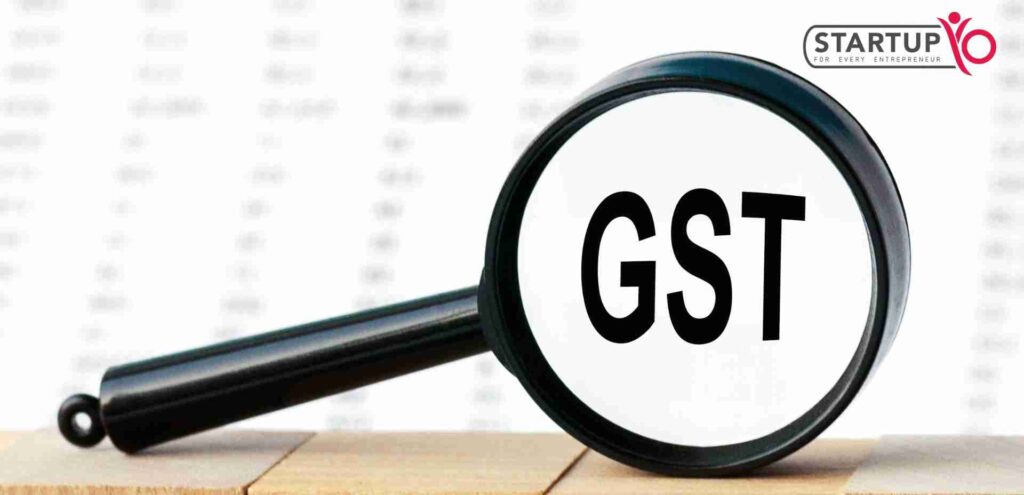GST Expansion: Adding a New Place of Business

We have all encountered the term ‘GST’ in our daily lives. But navigating the realm of taxes can feel like a complex journey, especially regarding the Goods and Services Tax (GST). One crucial aspect that often leaves many confused is the “Place of Supply.” If you’ve ever wondered what this term really means and how it impacts your business or daily transactions, you’re not alone. Simply put, the “Place of Supply” is the deciding factor determining which state or union territory gets the right to collect the GST on a particular transaction. It’s like the geographical compass guiding the tax authorities to ensure that the right place gets its due share of the tax pie.
Understanding the dynamics of Place of Supply is essential for businesses, service providers, and consumers alike. From online purchases to inter-state services, the rules surrounding the Place of Supply play a pivotal role in the seamless functioning of the GST system.
Read More : The complete History of GST in India
So, why does It matter?
Imagine you’re buying something online, and the seller is in a different state. The Place of Supply helps decide which state collects the GST on that transaction. It ensures that the right amount of tax goes to the right state government.
How is it determined?
The rules for determining the Place of Supply vary for goods and services. For goods, it’s typically where the goods are delivered. So, if you order a fancy gadget online and it gets delivered to your doorstep in Kolkata, the Place of supply is Kolkata.
For services, things get a bit trickier. The Place of Supply is often where the service is actually performed. If you hire a web designer based in Delhi to create a stunning website for your Kolkata-based business, the Place of Supply is Delhi because that’s where the service is happening.
Cross-Border Transactions
Now, sometimes, it may happen that you’re dealing with someone in another country. The Place of Supply rules still apply. They ensure that the correct country gets the tax revenue. So, if you’re importing a unique item from India to New Jersey, the Place of Supply is in India.
Understanding the Place of Supply is like having a GPS for GST. It guides the tax system to ensure that the right state or country gets its fair share of the tax pie. Whether buying goods, enjoying services, or dabbling in international transactions, the Place of Supply is the key to keeping the GST wheels running smoothly.
Process of adding additional place of business in GST
If you’re diving into GST (Goods and Services Tax), understanding the nuances, including the concept of “place of supply,” is crucial. But what happens when your business expands and you need to add another place of business under the GST regime? Let’s break down the process of ‘how to add additional place of business in gst’ in simple terms:
Read More : Threshold Limit for GST Registration
Step 1: Obtain a GST Registration for the New Place of Business
When you decide to expand your business and open a new place, the first step is to obtain a separate GST registration for that specific location. Each place of business is treated as a distinct taxpayer under GST. You’ll need to submit the necessary documents and details related to the new place, such as address and identity proof, to the GST portal.
Step 2: Update Business Details on the GST Portal
Once your new place of business is registered, it’s time to update your business details on the GST portal. Log in to your GST account and navigate to the ‘Amendment of Registration’ section. Here, you can change your existing registration details to incorporate the newly added place of business.
Step 3: Update the Place of Supply in Invoices
With the new place of business in the picture, updating the place of supply on your invoices is essential. The place of supply dictates the applicable tax rate, so accurate information is crucial. Ensure that invoices generated for transactions from the new place correctly reflect the location of the supply.
Step 4: Maintain Separate Books of Accounts
To comply with GST regulations, it’s advisable to maintain separate books of accounts for each registered place of business. It ensures clarity and transparency in your financial records, making it easier for tax authorities to verify transactions related to each location.
Step 5: Communicate Changes to Stakeholders
Inform your customers, vendors, and other stakeholders about adding a new place of business. This communication is not only good business practice but also helps avoid any confusion regarding invoices, delivery addresses, or other transaction-related details.
Step 6: Stay Compliant with GST Filing Requirements
As you add a new place of business, ensure that you stay compliant with GST filing requirements. Each registered place of business must file its GST returns independently. Stay organised and meet the filing deadlines to avoid any penalties or legal complications.
Expanding your business by adding a new place under the GST framework doesn’t have to be a daunting task. By following these simple steps – obtaining a separate GST registration, updating details, maintaining separate records, and staying compliant with filing requirements – you can smoothly integrate the new place of business into your existing GST setup. Documents required for additional place of business in gst.
Documents Required for additional place of business in GST
There are certain documents required for gst registration to ensure compliance if you’re venturing into an additional place of business. Let’s break it down into simple points:
- GST Registration Certificate: Ensure you have a valid GST registration certificate for your primary place of business.
- Address Proof for Additional Place: Submit documents that validate the address of your new business location. It could include utility bills, rent agreements, or property documents.
- Identity Proof: Provide identity proof of the person in charge of the additional place of business, such as an Aadhar card or passport.
- Authorization Letter: If someone else handles the affairs of the additional place of business, an authorization letter granting them permission should be furnished.
- Bank Account Details: Submit bank account details for the additional place of business to ensure seamless financial transactions.
Read More : How to apply for GST Number ?
- Board Resolution (if applicable): In the case of companies, a board resolution authorizing the establishment of an additional place of business may be required.
- Proof of Ownership or Possession: If you own the property, provide documents like the property deed. If it’s rented, include a rent agreement.
- Photographs of the Additional Place: Include photographs of the new business location, showcasing the exterior and interior, to validate its existence.
- Business Activities at the Additional Place: Clearly outline the nature of business activities that will be conducted at the additional place.
- Letter of Undertaking (LUT): If applicable, submit an LUT stating that the business will comply with all GST regulations.
Ensuring you have these documents in order will facilitate adding a new place of business in gst registration process and help you stay compliant with the regulatory framework.
Conclusion
In a nutshell, understanding the Place of Supply in GST is vital for businesses and consumers alike. It’s like a GPS guiding tax payments to the right destination. For goods, it’s where they’re delivered or installed, while for services, it’s where they’re performed or received. This ensures that the tax revenue goes to the state or country where the consumption happens, promoting fairness and transparency in tax collection. Knowing the Place of Supply ensures that the proper tax authority gets its due share, whether it’s a local transaction or crossing borders.
FAQ’s
What is place of supply in GST?
In GST, the place of supply refers to the location where goods or services are deemed to be supplied. It determines the applicable tax jurisdiction. For instance, if you buy something in New Jersey, the place of supply is Delhi, and GST is applied accordingly.
How do you change the principal place of business in GST?
To change the principal place of business in GST, visit the GST portal, log in, and navigate to the ‘Services’ tab. Choose ‘Amendment of Registration,’ then ‘Principal Place of Business.’ Fill in the new details, submit the required documents, and follow the steps to complete the process.
how to remove additional place of business in GST?
To remove an additional place of business in GST, log in to the GST portal, go to ‘Services,’ click ‘Amendment of Registration,’ choose ‘Addition of Place of Business,’ and follow the steps to delete the extra location. It’s essential to keep your GST details updated for accurate records.
What is place of supply of services under GST?
In GST, the “place of supply of services” determines the location for tax purposes. Simply put, it’s where the service is received. For example, if you get a service in Mumbai, that’s your place of supply.
Why is place of supply in GST important?
In GST, the place of supply determines which state gets the tax. It’s crucial as it ensures fairness in taxation. For example, if you buy something online, the tax goes to the state where you receive the goods, promoting a balanced tax distribution.



